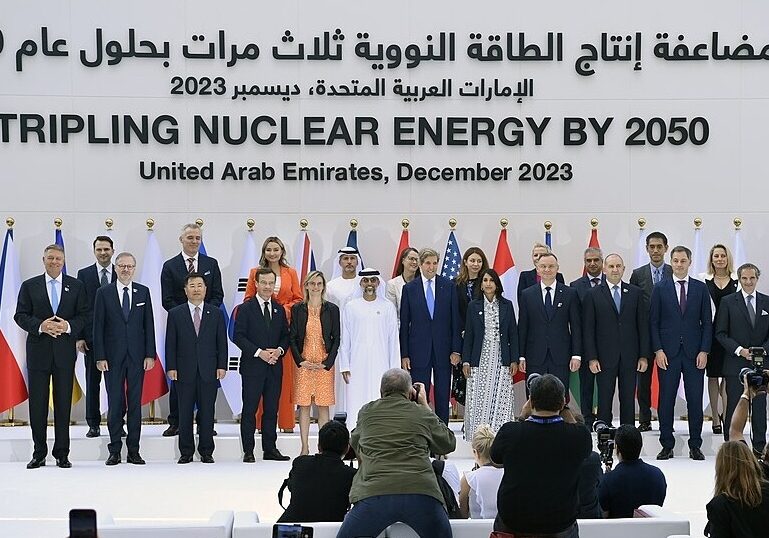Triple nuclear plan lands with a thud

The Declaration to Triple Global Nuclear Capacity by 2050 made at COP28 has had its balloon further punctured by its post-COP reception. Only 22 countries — and just 17 with existing nuclear power programs as Sharon Squassoni points out in her excellent numbers crunch in The Bulletin of the Atomic Scientists — lined up to endorse nuclear. Of the five non-nuclear countries, “none of these five countries is likely to make a significant contribution toward tripling nuclear energy in the next 20 years,”Squassoni wrote.
She added: “The 17 remaining signatories to the nuclear energy declaration represent a little more than half of all countries with nuclear energy, raising the issue of how much support there really is for tripling nuclear energy by 2050.”
Jon Queally, managing editor at Common Dreams, collected up a battery of critiques from climate campaigners and academics, who concluded universally that the nuclear declaration was a dangerous distraction allowing nuclear power to impede climate progress whilst being “too costly, too risky, too undemocratic, and too time-consuming.”
And he reminded us how back in 2019, “Harvard University professor Naomi Oreskes and renowned author and psychohistorian Robert Jay Lifton,” had already reminded us that when “advocates of nuclear power declare the technology ‘clean, efficient, economical, and safe’ it is of course none of these”. As Orsekes and Lipton wrote then: “It is expensive and poses grave dangers to our physical and psychological well-being.” They warned that “If nuclear power is embraced as a rescue technology,” the necessary accelerated build would set up “a worldwide chain of nuclear danger zones—a planetary system of potential self-annihilation.”
Mycle Schneider, lead author of the annual World Nuclear Industry Status Report whose 2023 edition was just released, was interviewed by The Bulletin of the Atomic Scientists, where he said the COP nuclear declaration “from the point of view of feasibility” was “impossible”.
Added Schneider: “If small modular reactors were to be a significant contributor to this pledge, hundreds or even thousands of these things would need to be built to come anywhere near that objective. It’s impossible. We should come back to reality and discuss what’s actually feasible. Only then can we discuss what would be the pros and cons of a pledge.”
Of the triple renewable energy pledge by 2030 he pointed out: “That’s seven years from now. To me, this pledge on renewable energy, if implemented, is the final nail in the coffin of the pledge on nuclear energy.”
Support Beyond Nuclear
Help to ensure a safer, greener and more just world for all

